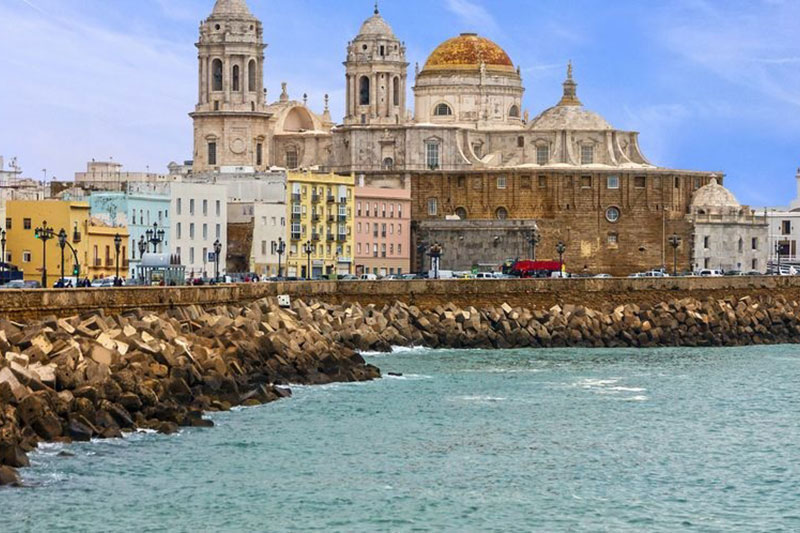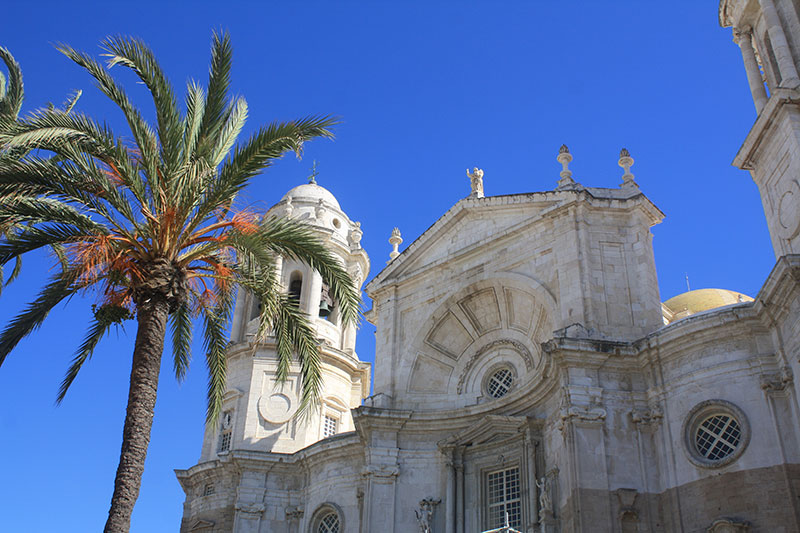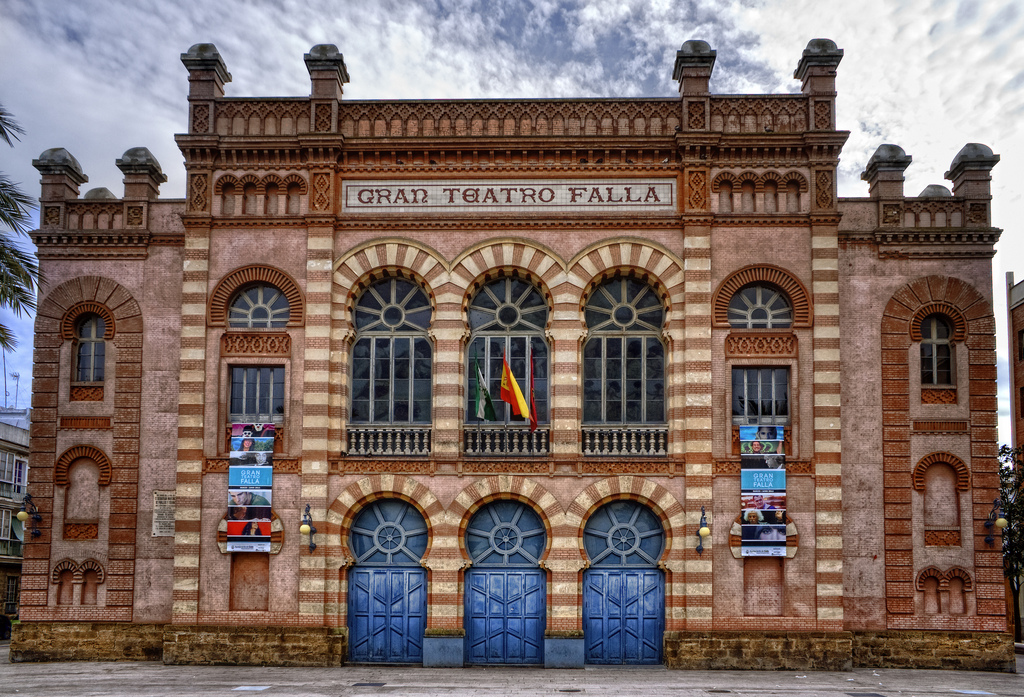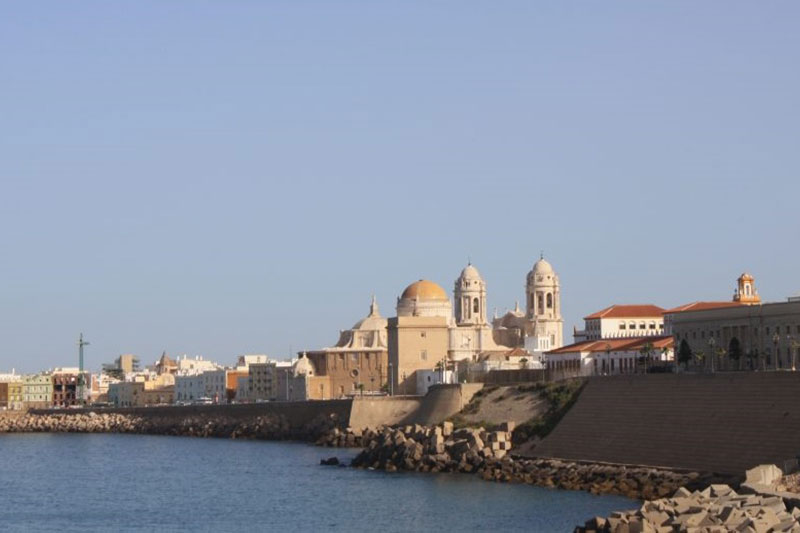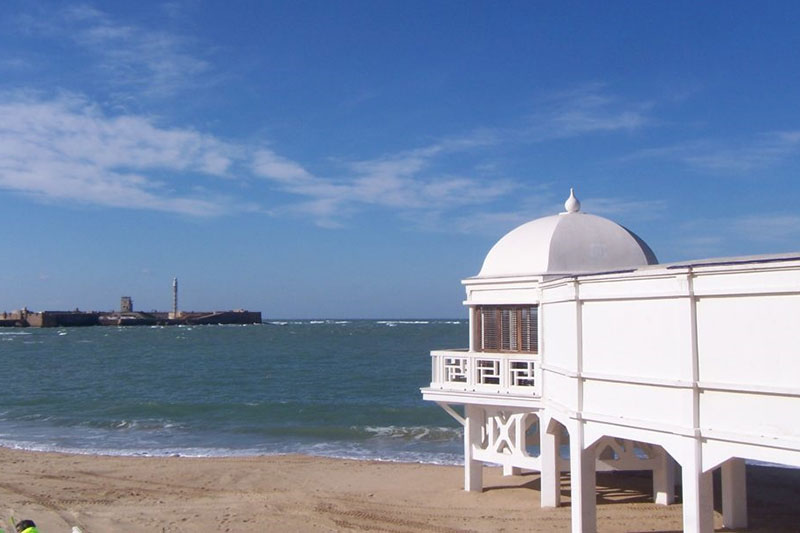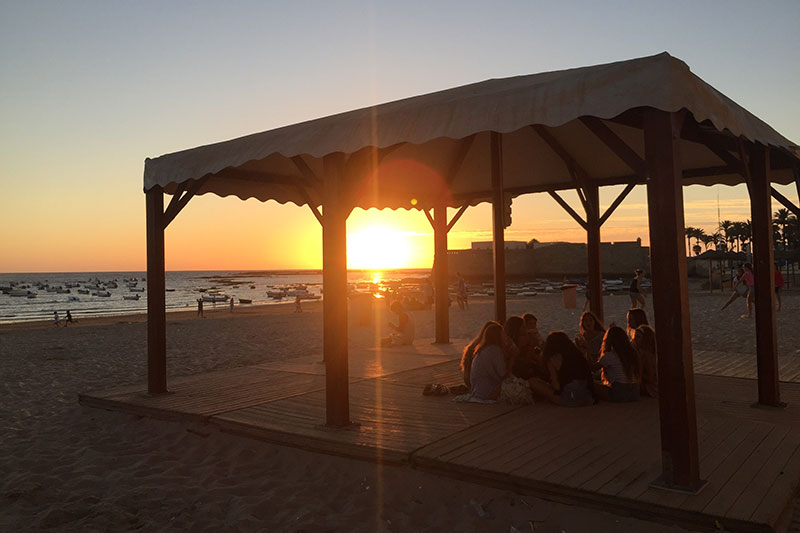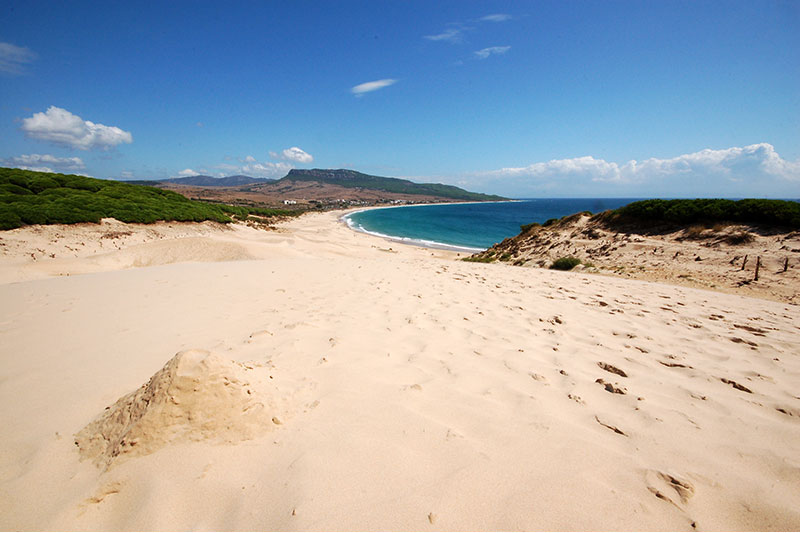Cadiz, population 160,000, was founded by the Phoenicians approximately 1,100 years before Christ, and holds the distinction of being the oldest city in Europe. Cadiz is surrounded by the sea on three sides and is only accessible by the “Puerta de Tierra”, a strip of land that was constructed in 1755 and serves as entrance to the city.
Cadiz, with three thousand years of history, has experienced great changes. With the discovery of the Americas, the city flourished. During the 16 th century, the colonial sea trade made Cadiz one of the richest cities in Europe. The greatest recognition in modern history came in the 18 th century when Cadiz became the primary port of trade with America.
Due to the rich history of Cadiz, the current monuments, buildings, and museums are full of stories and depictions of the past. Though most of the ancient ruins are today covered by the ocean or modern construction, much of the history is still alive and visible. Perhaps also equally important, modern day Cadiz is not overwhelmed by tourists and has managed to preserve more of an authentic Spanish flavor.
During the courses, we organize plenty of excursions to nearby places with the intention of giving the students the opportunity to get to know more of Spain.
All these excursions are integrated in the academic program and the highlight topics are covered in class.
All of them are carried out by a Coordinator/teacher that will be explaining, in an entertaining and amusing manner, all the important historical aspects of the city.
Jerez de la Frontera, Conil, Vejer de la Frontera, Gibraltar, El Puerto de Santa María, Sanlúcar de Barrameda or the white towns.
Important: In some cases, this may include overnight hotel stays.
At Instituto San Fernando, we realize that the success of a Spanish language program is not solely dependent on the quality of the classes, but also the development of a cultural activities/free time program which fully immerses the student in the country’s culture.
The cultural activities component of our programs is designed to provide our students with a vision of Spanish culture and society in the most complete and integrated form possible. It is based on diverse criteria, including our high academic standards as well as the personal interests of the students.
All activities are carefully planned, discussed before and after in the classroom, include the appropriate materials and are accompanied by a specialized professor-mentor. We not only teach culture in the classroom; we allow each student to experience the most important aspects of Spanish society through a carefully structured program of cultural visits.
The Tavira Tower, walking through the Pópulo neighborhood, the Constitution route, the Castles of Santa Catalina and San Sebastián or the most important museums in the city are some of our proposals.


